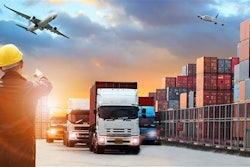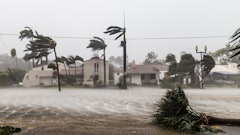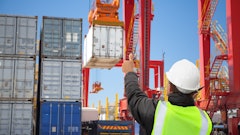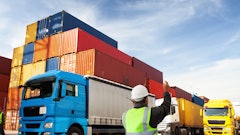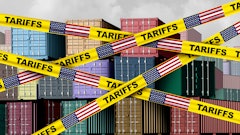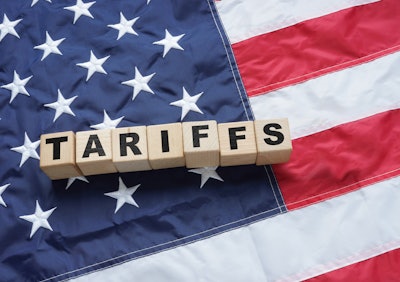
As the global economy recalibrates to new geopolitical realities, trade policy is once again reshaping the supply chain landscape. The United States’ imposition of new and expanded tariffs—particularly those targeted at China—represents not a short-term disruption but a redefinition of the rules under which global trade operates. For supply chain executives, this is not simply a customs or cost issue. It is a strategic inflection point.
Over the past several weeks, U.S. regulators have unveiled a series of tariff modifications aimed at discouraging reliance on strategic competitors for critical inputs while encouraging reshoring and friendshoring practices. These tariffs span a broad range of commodities, including raw materials, finished electronics, industrial metals, and advanced manufactured goods. They are also layered on top of earlier measures dating back to the first Trump administration, creating a complex compliance environment with multiple levels of trade friction.
For companies importing into the United States or relying on international vendors, the key question has evolved from “How do we manage tariffs?” to “How do we realign our global strategy in a high-tariff world?”
The tariff environment: Not just more, but more uncertain
The latest round of tariffs builds upon executive orders, Section 301 and Section 232 actions, and long-standing antidumping measures. But unlike the initial wave of trade actions dating back to 2018–2020, which were sometimes designed more for political signaling than long-term economic policy, the current measures appear to be embedded in broader industrial policy objectives: technology decoupling, national security, and economic resilience.
In practical terms, this means tariffs are not going away—even with changes in administration positioning. Tariffs now work in tandem with subsidies and export controls, forcing companies to reassess not only the cost but also the legality and strategic wisdom of sourcing from certain jurisdictions. As a result, companies are confronting a convergence of supply chain disruption, regulatory scrutiny, and rising cost structures. This trifecta is straining the elasticity of global procurement models.
HTS Code classification and country of origin: The compliance crossroads
One of the most immediate consequences of these tariff shifts is increased pressure on accurate Harmonized Tariff Schedule (HTS) classification and country of origin analysis. Minor errors in HTS code selection or assumptions about country of origin may now yield not just compliance gaps but multimillion-dollar cost consequences.
For example, a product that once qualified for duty-free entry under the United States-Mexico-Canada Agreement (USMCA) may no longer do so if post-manufacture processes shift outside North America. Likewise, if a product is misclassified under a subheading now captured by the executive order’s Annex II schedule, it could inadvertently trigger a 10–25% duty rate.
Firms have recently worked with clients who believed their imports qualified for preferential tariff treatment under USMCA, only to discover that their supply chain’s transformation processes—conducted in third-party countries—interfered with the agreement’s substantial transformation rules. These situations underscore the need for documentary clarity, not just legal interpretation.
In a world of tariff volatility, compliance is not a box-checking exercise; it is a proactive discipline.
Strategic responses: 3 paths forward
So, what can supply chain executives do to mitigate risk and maintain resilience? Importers and logistics providers are encouraged to follow three primary strategic shifts:
- Diversify country sourcing and contract terms
Now is the time to revisit your vendor footprint. Do you have excessive exposure to one region or trade regime? Rebalancing your supplier base—particularly toward USMCA, Dominican Republic-Central America FTA (CAFTA-DR), or other FTA-aligned partners—can create tariff efficiency while mitigating political risk. Concurrently, build flexibility into vendor contracts: Allow for renegotiation based on HTS classification changes or force majeure events tied to regulatory actions. - Invest in HTS and COO expertise
Many importers rely on customs brokers for classification decisions. While this can be efficient, it is no longer sufficient. Companies must develop internal or outside counsel expertise in HTS code validation, country-of-origin (COO) rules, and eligibility for exemptions or preferential programs. Clients should audit their Top 10 imported product lines annually for classification accuracy and tariff exposure, especially those originating from China, India, Vietnam, or Israel, where the tariff landscape is evolving fastest. - Prepare regulatory support files proactively
Companies are well served by preparing tariff and trade documentation in anticipation of regulatory inquiry, not in reaction to it. This includes compiling COO substantiation, HTS memos, and manufacturing flowcharts demonstrating substantial transformation. These files support not only tariff exemption applications but also regulatory defense if U.S. Customs and Border Protection initiates an audit. Additionally, proactive use of binding ruling requests from CBP can help secure certainty in classification and origin treatment.
The role of the supply chain executive: From operator to risk architect
As we move deeper into this new era of economic nationalism and trade policy activism, supply chain professionals must expand their remit. Tariffs are no longer the domain of the legal or compliance departments alone. They are now a core variable in strategic planning, vendor selection, contract pricing, and delivery timing.
This requires a different mindset. The global supply chain leaders of today are not simply optimizing cost and time. They are architecting resilience, pricing regulatory volatility, and translating policy into operations.
Tariffs may have once seemed like the purview of Beltway insiders. No longer. They now shape your cost base, your vendor map, and your competitive position. Supply chain executives must not only adapt—they must lead.
Conclusion: Strategic resilience in a politicized trade environment
The current tariff environment is more than a policy tool—it is a strategic fault line. Companies that approach tariff management with a reactive posture will find themselves exposed to cumulative costs, delayed deliveries, and regulatory exposure. Those who engage early—by reassessing sourcing strategy, enhancing compliance sophistication, and preparing robust support documentation—will be better positioned not just to weather this disruption but to lead through it.
Tariffs may be here to stay—but supply chain fragility doesn’t have to be.





